Amidst the second half of the nineteenth century, during a time that has come to be known as the 19th century occult revival, the curious practice of spirit communication was spreading like ectoplasm. From séances and psychic channelings to magic mirrors and table tippings, Spiritualism and communications with the dead became all the rage on both sides of the pond, greatly influencing the thought and occupying the minds of those who would contribute largely to the esoteric literature of the era. One of the primary modes of spirit communication that was widely practiced at the time was crystal or mirror gazing, known as catoptromancy or skrying. This was accomplished with the use of prayers, invocations, and the burning of psychotropic incenses, as well as the consumption of a number of narcotic, hypnagogic, and entheogenic plants and substances. These include but are not limited to cannabis, opium, nitrous oxide, and even psychedelic fungi.[1]
It is believed by practitioners of the art that the spirits of all manner of deceased and disincarnate figures may be called into the crystal or mirror, and thereafter petitioned for the knowledge, favors, etc., that the querent requires or desires. Some of the key players during this creative period include visionary Rosicrucian, Paschal Beverly Randolph, psychic Spiritualist, Emma Hardinge Britten,[2] Helena Petrovna Blavatsky of the Theosophical Society, and especially Freemasons Frederick Hockley and his students Kenneth R.H. Mackenzie and F.G. Irwin, as well as the latter’s teenage son, Herbert Irwin.
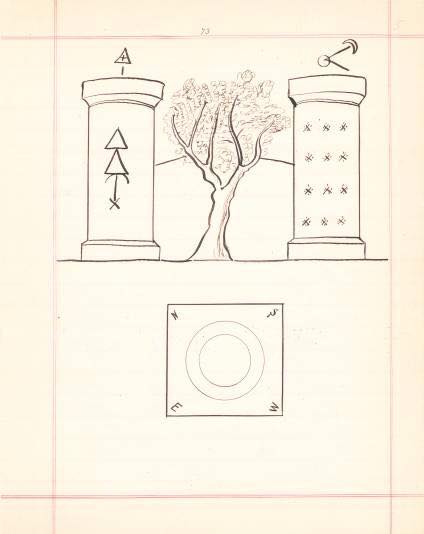
Concerning these last, John Yarker, in his paper, The Society of the Rosy Cross, provides a description of what he considers to be the various stages of true occult progress, the third of which includes “the use of the ‘Crystal Stone’ or magical mirror.”[3] The association of crystal balls, seeing stones, and magical mirrors with Rosicrucianism goes at least as far back as the publication of the first Rosicrucian manifesto, Fama Fraternitatis, in the early 17th century, wherein is described a ‘Vault’ having seven sides or walls, and each wall being a door that opens to a chest in which contained, among other things, “looking glasses of diverse virtues.”[4] Yarker claims in the same paper that he knew of only three Fratres who possessed any competent and practical knowledge of Rosicrucianism: Frederick Hockley, Kenneth R.H. Mackenzie, and Capt. F.G. Irwin, all three of whom are known to have been avid crystal and mirror gazers.
Directly involved during the formative years of SRIA, Hockley, Mackenzie, and the Irwins are known to have preoccupied themselves with all things Rosicrucian, central to which, they believed, was the use of the magic mirror and/or crystal ball. Furthermore, of particular interest to them was the elusive Fratres Lucis, an alleged splinter group of Der Ordens des Gold und Rosenkreuzer, one of the first groups styling themselves “Rosicrucian” to surface following the initial publication of the Rosicrucian Manifestos. Keen to acquire information on the mysterious Fratres Lucis, the Irwins put to use their master, Hockley’s teachings and turned to the crystal ball in order to petition the great mystic, Count Cagliostro, for assistance. It was believed by them that Cagliostro was a bona fide member of the Fratres Lucis fraternity. As F.G. Irwin’s magical diaries of the time clearly reflect, the operations were a great success, and the extended results can be found in Herbert Irwin’s Book of Magic, the purported astral grimoire of the Fratres Lucis.
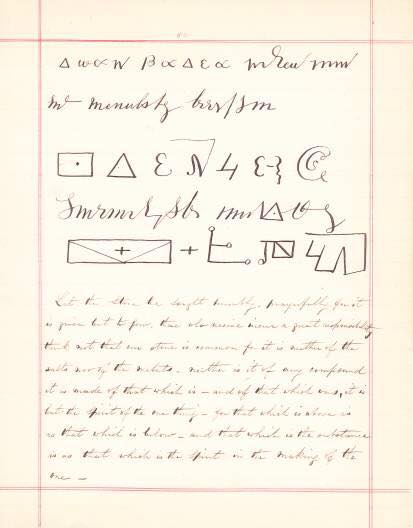
Among the alleged Cagliostro crystallomancy transmissions is one of particular interest to us for our present purposes – one which potentially provides a solution to the problem of the oral activity of the concoction of Acacia given to candidates by Cagliostro in his Egyptian Rite of Freemasonry. As we’ve explained elsewhere, Acacia would not normally be orally active. In order for it to become so, the Acacia would usually necessitate being paired with an MAOI-containing plant such as Peganum harmala, aka Syrian rue. Remarkably, “Herb Rue” is precisely what Herbert Irwin has recorded in his Book of Magic as being an important tool in the Fratres Lucis’ pharmacopeia, according to the Cagliostro crystallomancy transmissions[5]. The Irwins’ master, Hockley himself was even fascinated by the “Herb Rue,” as can be ascertained from the following excerpt from a letter from Hockley to the Irwins wherein the former pressed the latter for information pertaining to the mysterious “Herb Rue.”
“There is a recipe on the properties of the plant Rue I know you will allow Herbert to copy out for me as I wish…to try it.”[6]
“As I mentioned in my note I read your MSS with very great interest. …When you are in town bring the [Book of Magic] MSS up and we will compare notes…by the bye I asked you for a copy of the recipe on the herb Rue. It is only a few lines.”[7]
That fact that Hockley requested a recipe, and not a single herb, is very interesting. But, was Syrian rue truly the plant intended by the Cagliostro transmissions? According to the Roman historian, Pliny the Elder, the only difference between Syrian rue and traditional rue is that the latter is the cultivated form of the former.[8] Complicating matters considerably, in Pliny’s time no real distinction was made between the two beyond the belief that Syrian rue (Peganum harmala) was the wild manifestation of the cultivated traditional rue (Ruta graveolens). Traditional rue would certainly have been well known to Cagliostro and to the Irwins, the same having extensive and well-documented medicinal as well as religious applications. However, provided that the other botanicals itemized by Herbert Irwin in the astral Fratres Lucis pharmacopeia are either psychoactive or are commonly used as substitutes for psychoactive plants, e.g. saffron, opium poppy, vervain, etc., all of which have a long history of use as additives to magical incenses, love philtres, etc., traditional rue would appear to this author to be completely out of place. Syrian rue, on the other hand, would seem to us to be a perfectly natural, comfortable addition. Further, the effects of “Herb Rue” provided in Herbert’s Book of Magic are consistent with those of Syrian rue, which include sweating, mental clarity, and mood enhancement. According to the Book of Magic,
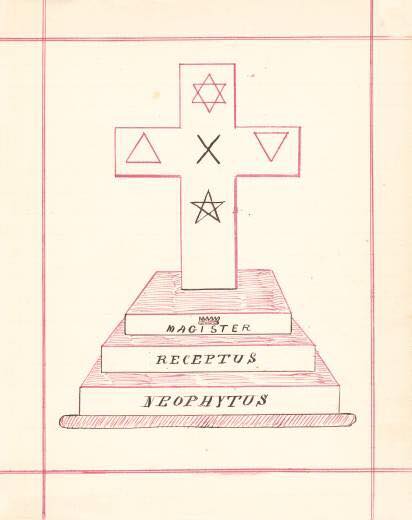
“[Herb Rue] is most strengthening and health giving, it imparts life and strength to the body – it opens the pores of the skin and inclines the body to sweat – it is well for diseases of the brain for it imparts strength of all desirable parts.”[9]
The portion regarding “diseases of the brain” is especially interesting as MAOIs are commonly used in psychiatry to treat mental health disorders including clinical depression and bipolar disorder. The same cannot be said of traditional rue, however.
Additionally, alongside the Acacia, Peganum harmala is possessed of a long tradition of sacramental use in Egypt as well. According to Italian psychedelic researcher, Giorgio Samorini,
“Peganum harmala is known as…besana (“plant of Bes”) in Egypt… Harmel seems to have been used in Coptic Egyptian rituals. An initiatory invocation dated to the 2nd – 3rd century AD refers to a noub tree, identified with harmel, which would have played the symbolic role of Tree of Life that holds the universe and under which Osiris resides.
[We] know [of] a reference of the 3rd century BC about the existence of wine vessels called besiakon, on which this deity was depicted. We do not know what kind of drink was poured from these vases, but the suspicion arises that it was a particular drink, in which some intoxicant ingredient was added, perhaps the “plant of Bes,” harmel. Bes’ association with this plant…would justify this supposition.”
Not surprisingly, Benny Shanon, a professor of psychology at Hebrew University in Israel, has argued convinvingly in his paper, Biblical Entheogens: A Speculative Hypothesis, that Peganum harmala seeds could have been paired with a local species of Acacia to produce a powerful visionary brew, the effects of which would be virtually indestinguishable from the South American beverage, ayahuasca. In fact, according to Samorini, “[the] plant of Bes…and the [Acacia] are the most powerful plant sources of MAO-inhibitors and DMT, respectively, in the world.”
Recall that Cagliostro himself, with his psychedelic rite, was believed by the Irwins to have been a member of the Fratres Lucis, so much so that, in writing his Royal Masonic Cyclopaedia, Kenneth R.H. Mackenzie, along with F.G. and Herbert Irwin, resorted to nothing short of conjuring the spirit of the then deceased Cagliostro to visible appearance within a crystal ball for the purpose of questioning him on the nature and history of the Fratres Lucis.[10] As one may have guessed, the Fratres Lucis rituals too may allude to the entheogenic potential of certain species Acacia.
In 1780 or 1781 (some sources say as early as 1777), Baron Hans Heinrich von Ecker und Eckhoffen left Gold und Rosenkreuzer to create the Fratres Lucis or Brotherhood of Light. Joscelyn Godwin wrote in his remarkable study The Theosophical Enlightenment,
“The impulse for this splinter-group was Ecker’s initiation by a Franciscan monk[11] who had spent many years in Jerusalem and learnt Kabbalistic secrets of alchemy and magic from a Jewish sect there. [The] work of the Fratres Lucis was predominantly alchemical, and its rituals still close to those of the Golden and Rosy Cross…”[12]
Compare the following excerpt from the first degree of Eckhoffen’s Fratres Lucis with those from Cagliostro’s Egyptian Rite quoted in our previous article, Alchemical Elixirs and Egyptian Freemasonry.
“Before receiving thee into the Order they took thee into a darkened room, this teaches thee that our Matter is found in a black state – our Earth. We also took away all the Metals thou hadst upon thee; this shows that our Matter is not found where Metals grow. They tookest away thy clothing; it shows that our Matter is stripped of the Veil with which Nature has clothed it …Thine eyes were blindfolded; which teaches that though our Matter is luminous and in itself shining and clear, yet that it is only to be found in the darkest dwelling. A [Cable Tow] was round thy neck, by which the body was led; it…teaches the drawing out of our Matter. …The point of a [Poniard] was applied to thy breast to warn thee to beware of it. It should remind thee that no double edged weapon [need] be used to slay our Hiram and produce his precious blood, which is shown afterwards by a feeble Brother and his bloody handkerchief… In touching thee with the Compasses (held over a plate with blood thereon), the plate of blood held up, signifies that we have another [Poniard] beside the one that was shown to thee, and which we thrust into the bosom of our Matter until it pours forth blood. …Hiram, which signifies our Matter, has been killed by Three Workmen, in order that they might procure the Word… These traitors buried him and have already his Caput Mortuum. They make a hillock and the dead head appears, as if the Spirits excited it with rage, this is shown by the Branch of Acacia.”[13]
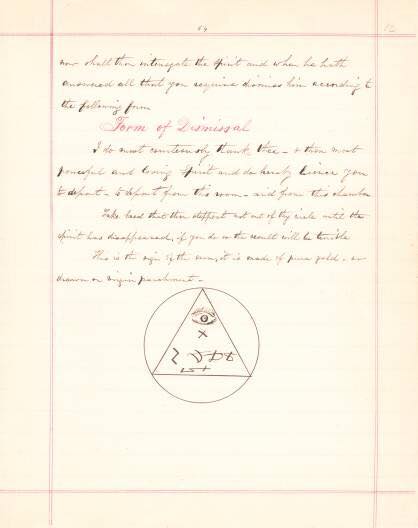
The Fratres Lucis lecture relates an alchemical application of Masonic ritual which again clearly points to the production of DMT from Acacia. Here, as in Cagliostro’s ritual, Hiram is treated consubstantially with the Acacia. In both, the DMT-rich solution which is extracted from the Acacia, our primal matter, prior to the solution’s evaporation to a crystalline salt, is identified as ‘Hiram’s blood,’ called by Cagliostro the “mercurial part.” According to the lecture, the “Matter” is to be found in the earth; that is, with the roots. As Ruck once pointed out, the highest concentrations of DMT in the Acacia are to be found within the root bark. The removal of the clothing or “stripping of the veil with which nature has clothed” the “Matter” is therefore likely the stripping of the superfluous material – all but the lapis. The ‘other poniard’ which is “thrust into the bosom of [the] Matter until it pours forth blood” is perhaps an allusion to the (al)chemical solvent used to extract the compound. For, “no double edged weapon [need] be used to slay our Hiram and produce his precious blood.” Indeed, the process is entirely alchemical. And, the three workmen may very well allude to the three-step extraction process[14] by which DMT is organically manufactured, etc. etc. Were this extraction then to be combined with the MAOI-containing plant, “Herb Rue,” the result would be a supremely visionary brew, the effects of which would be virtually indistinguishable from those of the South American tea, ayahuasca.
The idea that a psychedelic drug could have played a part in early Masonic ritual is often met by members of the Fraternity with repugnance and disbelief. After all, Free and Accepted Masons are charged with the task of peacefully submitting to the laws of the land wherein they reside. And, outside of affiliation with the Santo Daime, the Uniao do Vegetal, or the Native American Church, the only three organizations legally sanctioned to use the compound under the Religious Freedom Restoration Act of 1993, DMT production, possession, and consumption are completely illegal in the United States – save in the cities of Denver, Oakland, Chicago, Berkeley, etc. One must keep in mind, however, that the time in question was the 18th century and earlier, when scientific investigation was still in its infancy, long before the war on drugs or the notion of psychedelics were even concepts. The detrimental effects of addiction were for the most part still to be seen, as were the hard drugs which are so plaguing society today, such as crack cocaine, heroin, and methamphetamine. Therefore, outside of chronic alcohol and opium abuse, the stigma which surrounds the use of essentially any drug in this day and age was for them completely foreign. Thus, the discovery of DMT and its magical effects would have been met with such novelty and excitement that it is no wonder entire Masonic lectures appear to be dedicated to its mysteries.
P.D. Newman
Author of Alchemically Stoned
WORKS CITED
Britten, William. Art Magic, or Mundane, Sub-Mundane and Super-Mundane Spiritism. Progressive Thinker Publishing House. Chicago, IL. 1909.
Godwin, Joscelyn. The Theosophical Enlightenment. State University of New York Press. New York. 1994.
Grand College of Rites. “Fratres Lucis.” Collectanea vol. 1 pt. 2. Grand College of Rites, U.S.A. 1978.
Hamill, John. The Rosicrucian Seer: Magical Writings of Frederick Hockley. The Teitan Press. York Beach, ME. 2009.
Irwin, Herbert. Book of Magic. Society of Esoteric Endeavor. 2014.
Taylor, Joan E. The Essenes, the Scrolls, and the Dead Sea. Oxford University Press. 2012.
Yarker, John. “The Society of the Rose Cross.” The Rosicrucian Brotherhood, vol. 1, no. 3, July, 1907, pp. 113-24.
Yates, Frances A. The Rosicrucian Enlightenment. Routledge Classics. London and New York, NY. 2002.
[1] Britten, Art Magic, p. 136
[2] Emma Hardinge Britten, who is believed to have been Hockley’s seeress, was also present at the Spiritualist meeting which led to the formation of the Theosophical Society.
[3] Yarker, The Society of the Rose Cross
[4] Yates, The Rosicrucian Enlightenment, p. 307
[5] Thank you to Michael S. Downs for bringing this to our attention.
[6] Hamill, The Rosicrucian Seer: Magical Writings of Frederick Hockley, p. 64
[7] Ibid. at 66
[8] Taylor, The Essenes, the Scrolls, and the Dead Sea, p. 316
[9] Irwin, Book of Magic, p. 93
[10] Ibid. at 135
[11] The monk’s name is said to have been Bischof.
[12] Godwin, p. 121
[13] Grand College of Rites, Fratres Lucis, p. 52
[14] The steps for producing DMT from Acacia are virtually identical to Paracelsus’ Primum Ens technique.

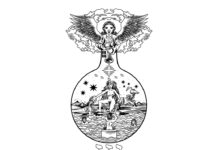
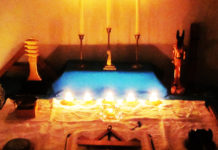
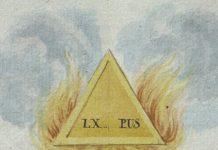







Hi, The Irwin “Book of Magic” Manuscript was actually created by Major F.G Irwin himself and not penned by his son Herbert as previously thought. I have compared the manuscript with the other Fratres Lucis manuscript currently found in the museum of freemasonry that is known to be in Major Irwin’s hand and sure enough the calligraphy is an exact match. I have also examined a manuscript that was by Herbert (with his name present on the title page) and his work is much rougher and not as refined as his fathers, although Herbert was instrumental in helping his father create the Fratres Lucis manuscript as he acted as Major Irwin’s Seer for most, if not all, of his experiments.